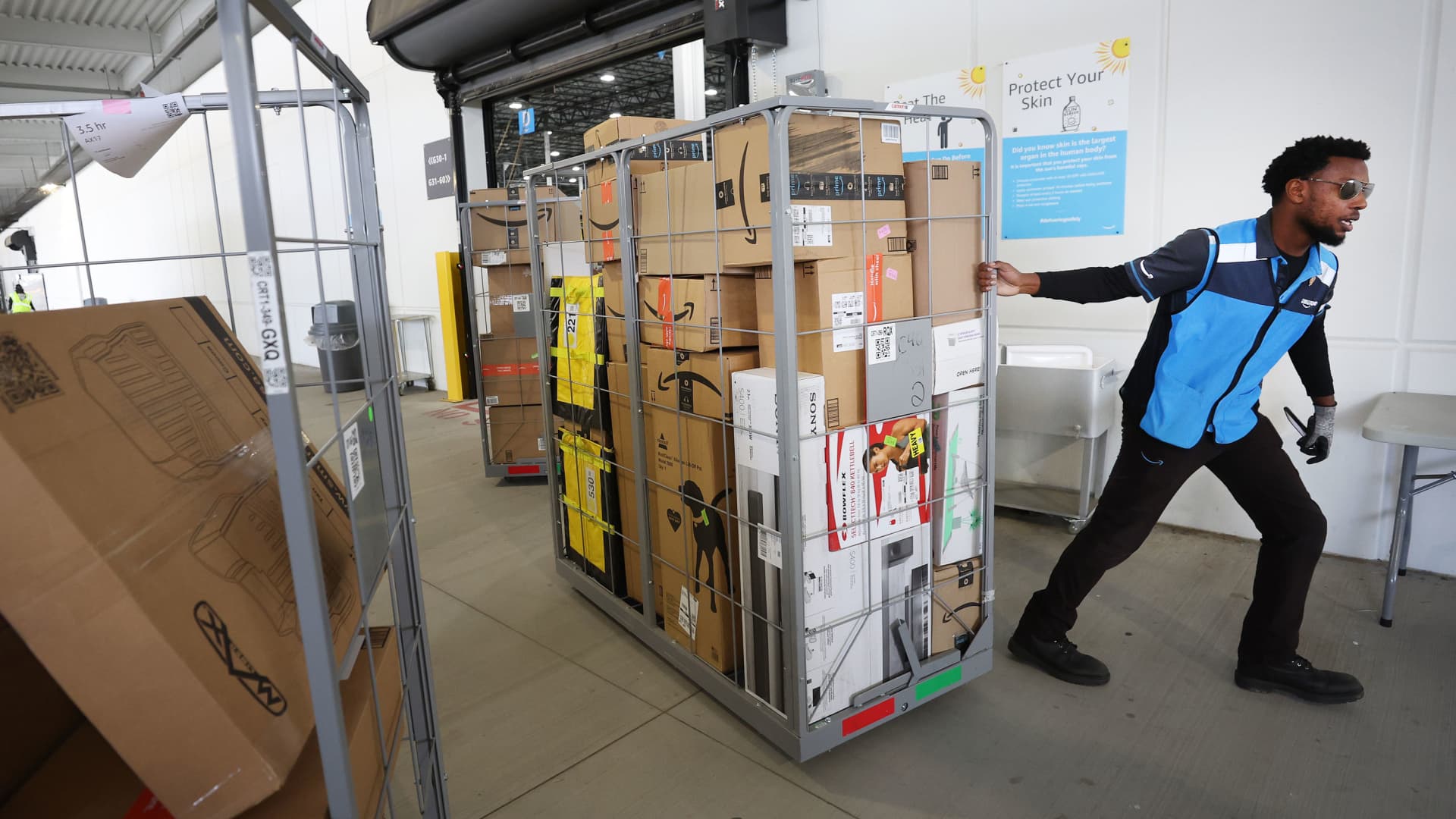
An Amazon driver loads packages into a delivery van at an Amazon delivery station in Alpharetta, Georgia, Nov. 28, 2022.
Justin Sullivan | Getty Images
Amazon said it plans to boost wages for contracted drivers as part of a $440 million investment this year into its third-party delivery program but declined to say by how much.
The company announced the pay bump at an annual, closed-door conference called Ignite Live with the 3,500 small businesses that make up its delivery service partner program. The DSP program, launched in 2018, comprises about 279,000 drivers, often distinguishable by blue Amazon-branded vans, who are responsible for delivering packages the last few miles to shoppers’ doorsteps.
“This is going directly to DSPs, so that they can offer competitive pay to their employees, and build and retain great teams,” said Beryl Tomay, Amazon’s vice president of last mile delivery and technology, in an interview.
DSPs are “free to set their own wages and incentives,” though Amazon sets a minimum pay standard through the contracts it signs with the companies, Tomay said.
Amazon did not say how much it was raising wages, but the company now anticipates the average delivery associate will earn $20.50 per hour on average, or more, plus benefits. The DSPs regularly pay above the minimum set by Amazon, and it audits DSP wages “on a regular basis,” Tomay said. The amount differs depending on where the contractors are based, among other factors, she said.
Pay increases will begin rolling out to delivery companies in mid October.
The DSP program is a key weapon for Amazon’s logistics arsenal that has allowed it to reduce its reliance on carriers such as the U.S. Postal Service and FedEx while speeding up deliveries. Amazon has invested about $8.9 billion in the program since its inception, and DSPs have generated more than $45 billion in revenue over the past five years, Tomay said.
The move comes as Amazon faces a renewed push from the International Brotherhood of Teamsters to unionize its delivery driver workforce. Since June, the union has set up picket lines at about a dozen Amazon warehouses in the U.S. to raise concerns about working conditions, after the company in April cut ties with a California-based DSP that unionized with the Teamsters. Critics have argued Amazon relies on subcontracted delivery drivers to dodge liability and avoid unionization.
Amazon has previously said it respects its workers’ right to join or not join a union.